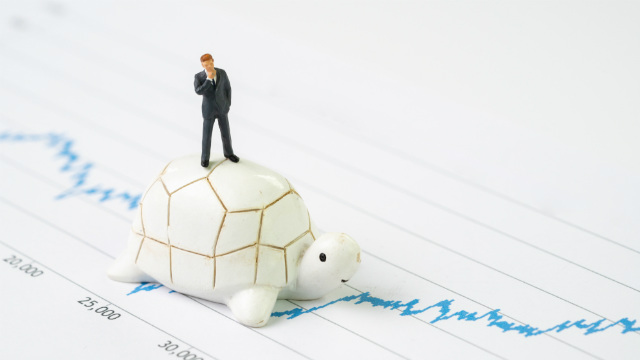Expert tips on when to sell shares

Share experts Danielle Ecuyer, Roger Montgomery and Scott Phillips reveal the issues they consider when thinking about whether to sell.
Deciding when to sell shares can be just as important as picking which shares to buy. Canstar asked three experts to share their tips for selling shares. Here’s what they had to say.
Danielle Ecuyer
What some share investors often fail to realise is that selling the losers (or potential losers) is as significant to long term gains, as buying the winners. So how do you know when you should sell a share?
It is hard to have strict rules, as not all companies are the same, but the one underlying feature is declining growth in revenue, earnings and margins. Here is my go-to list of red flags for share investors and points to keep in mind:
- A classic red flag of declining growth potential is the failure to maintain adequate levels of investment for the future growth of the business.
- The growth in the dividend per share exceeds the earnings per share, suggesting the company is increasing or maintaining the dividend payout ratio at the expense of growing the business.
- Earnings downgrades. One downgrade due to unexpected circumstances (or a pandemic) is acceptable, but more downgrades could signal all is not well with the business.
- Growing too quickly through acquisitions and taking on too much interest-bearing debt. There is nothing wrong with debt, so long as the company has sufficient cash flow to cover the interest payments. Too many companies come unstuck by trying to grow through large acquisitions, particularly overseas. Recent examples include Boral and Speedcast.
- A falling share price is more often than not an indication that something is wrong. Although share prices are more volatile in a low-interest rate world, a share price falling from the top left corner of a share price chart to the bottom right corner is a big red flag. You should start to be concerned after a 25% fall.
- Never forget, it is never too late to sell. A share price can keep halving until the company goes bankrupt.
- It is hard to turn around a fallen star. High dividend yields are a red flag. Hoping for the turnaround is a false economy. Selling and reinvesting in a higher growth share is likely to deliver better investment returns.
- Disruption and deteriorating competitive advantage can give investors an early heads up to sell ahead of the pack. Keeping an eye on long-term secular trends is key to determining which shares are vulnerable and those you may need to sell.
A look through history consistently shows that once-popular growth shares can become death stars. As hard as it is to cut the emotional ties to a company, selling is generally the best way for capital preservation and reinvesting in the winners.

Danielle Ecuyer has been involved in share investing in Australia and internationally for more than three decades. She is also the author of Shareplicity: A simple approach to share investing.

Roger Montgomery
Part of the reason stockmarket ‘buy’ recommendations outweigh ‘sell’ recommendations is that experience shows owning businesses in the long run outperforms cash. There is a reluctance to recommend being out of the stockmarket but that doesn’t mean individual businesses should be held forever. Many fail, are liquidated or fall into either receivership or administration.
Selling is therefore an important part of portfolio management. Even the world’s greatest investor, Warren Buffett, has admitted that in some circumstances it was a mistake not to sell. As a fund manager, I believe selling can be justified for a number of reasons. Here are three of them:
Quality and performance of the business declines
The best businesses will demonstrate valuable competitive advantages, a high rate of return on equity, little or no debt, strong cashflows and bright prospects. It stands to reason that if a business’s quality deteriorates it should be reviewed for sale.
The intrinsic value of the business declines
Thirty years of market experience has taught me that in the short term, share prices move in almost total disregard for the underlying performance of the business but over the long term, share prices converge with intrinsic values. So even if other factors such as the dividend yield or PE ratio look good, consider selling when the intrinsic value of the company is falling.
The market price rises well above intrinsic value
Shares simply cannot continue to outperform the underlying business indefinitely. When share prices rise well above a company’s intrinsic value consider selling, or at least reducing your position. You may be tempted to set up some hard and fast rules, but I am more comfortable with the idea that the appropriate premium depends on the prospects for its intrinsic value in the future.

Roger Montgomery established the boutique funds management office of Montgomery Investment Management and is also the author of the best-selling investing guidebook Value.able.

Scott Phillips
Buying shares is hard. Selling is harder. So my first rule is ‘Do it slowly’. After all, if you’ve got your buy decision right, then you want to let go of that business only when you’re absolutely sure you’re right. Here’s why: I’ve recommended shares that are down 90%. Ouch! But what’s worse is selling too early and missing out on a huge gain. Case in point: I recommended our members sell Domino’s in May 2013, after the shares had gone up 46% in six short months.
I’m a genius, right? Not so fast. After recommending members sell at $11.71, shares subsequently went up another six-fold by the middle of 2016. Yes, losing 90% – turning $100 into $10 – is awful. But missing the chance to turn $100 into $960… well, suffice it to say one decent winner can pay for a lot of losers!
There are times to sell, though. Just don’t base your decision on whether you’ve made (or lost) money. The market doesn’t know – or care – at what price you bought your shares!
Sell if your thesis is busted. If you expected a company to do something that it just didn’t – and likely won’t – do, then holding on is just silly.
Similarly, if the share price simply makes it unlikely you’ll end up with a market-beating return, it’s a good idea to swap them for cold hard cash. Just be careful – you could, like me, sell a winner too early! Many an ‘overvalued’ company has gone on to earn big profits for shareholders, so my rule of thumb is to sell not when a company is – or might be – overvalued, but when it’s significantly overvalued.
Lastly, sell when you’ve got a better place for the money. No point turning $100 into $110, if you think you can turn it into $200 elsewhere. (But be careful here, too; you have to be right twice: both in selling the company you own, and buying something else.)
So as I mentioned at the top, my general rule is ‘Be slow to buy, but even slower to sell’. It’s a rule that’s served me well.

Scott Phillips is Chief Investment Officer at The Motley Fool and runs the Motley Fool Share Advisor, Million Dollar Portfolio and Everlasting Income services. Scott holds a Bachelor of Commerce, a Graduate Diploma in Accounting.
This article was reviewed by Editorial Campaigns Manager Maria Bekiaris before it was published as part of our fact-checking process.
Main image source: Tashatuvango (Shutterstock)
Follow Canstar on Facebook and X for regular financial updates.
→ Looking to find a better deal? Compare car insurance, car loans, health insurance, credit cards, life insurance, as well as home loans, with Canstar.

Try our Investor Hub comparison tool to instantly compare Canstar expert rated options.





